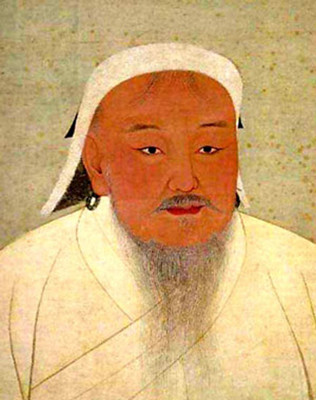Researcher Tatiana Zerjal, from the University of Oxford in England, and a team of geneticists took genetic samples of over twenty-one thousand men from all over Asia.
牛津大學研究人員塔緹娜瑟加爾和一組基因學者采集了亞洲21000份基因樣本,
They were looking for variations in certain genetic “markers,” or sequences of genes that tell you something about where people came from.
從中尋找某種基因“記號”或基因序列變化。基因序列可以識別出身。

To their astonishment, they found that one out of every twelve Asian men in regions once part of the Mongol empire carry a form of the Y chromosome that can be traced to Mongolia a thousand years ago.
令人驚訝的是,他們發現曾是蒙古帝國疆域,每12個人中就有一人攜帶追溯到千年前的蒙古基因的Y染色體。
How did this genetic tag become so widespread?
為何這種基因“標簽”流傳如此之廣?
Khan, they suggest.
他們認為是成吉思汗。
There is reason to believe that Khan himself, and thus his long-ruling descendants, had this particular form of Y chromosome.
研究人員猜測,有理由相信成吉思汗及長期統治的后裔都有這種特殊的Y染色體。
And though his power is long faded, the genetic empire of the conqueror is going strong–in roughly one out of every two hundred men alive today.
雖然時至今日,成吉思汗的政權早已衰敗,但是成吉思汗的基因卻留在人們的血液中。今天,大概每200人中可能就有一人有這種基因。












